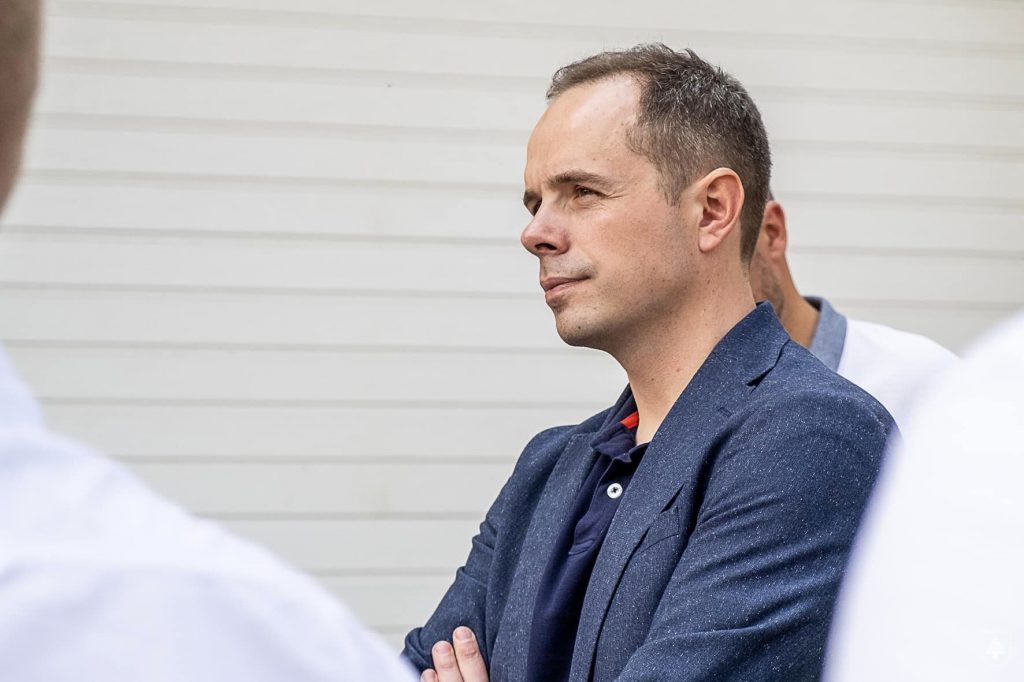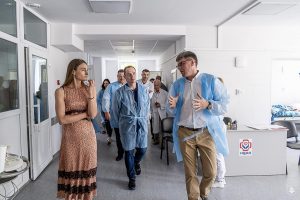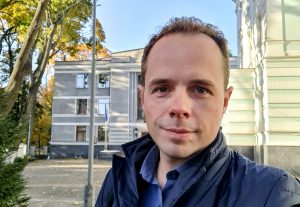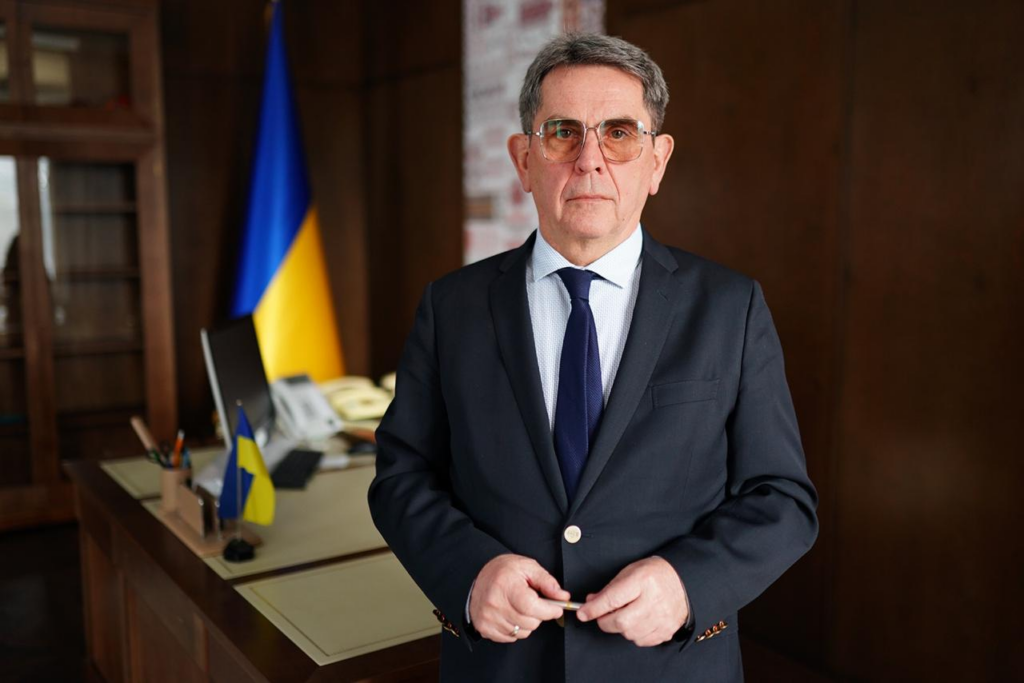
– The Verkhovna Rada adopted the bill No. 6306, which means that the medical reform has been continued. What changes await the medical industry at the second stage of medical reform, given that there is a war in the country? Is it realistic to implement everything planned now?
Last month, the Verkhovna Rada passed a draft law that makes certain fundamental changes possible to continue health care reform. One of the big parts is the normalization of work, defining the role of the medical network and what exactly health care institutions should be doing.
Additionally, the bill introduces concepts such as the implementation of waiting lists for medical care.
There will also be a procedure for determining the treating physician and a regulatory framework to improve the delivery of health care.
Here I would like to note that this draft law was prepared as early as the end of last year. At the beginning of 2022, the first reading took place. We were supposed to start the next stage of the reform, which gives clear powers to the NHRIs and local authorities, but the war started and the bill was passed a few months later. Our plans are to start the new stage of the reform already on January 1, 2023. Of course, we ll start it not on the whole territory of the country, but only where there are no active hostilities.

– In your estimation, how realistic is it to implement this stage of medical reform?
Let’s talk through what we’re changing first, and then focus on how difficult or easy it will be to implement.
One of the key changes will be the creation of hospital districts, which in turn will be divided into clusters. What is a hospital district? It is an area within which integrated health care will be provided through the creation of an established network of health care facilities. We get some new terms right away.
– Like what?
Well, for example, a wealthy network of medical institutions. These are the most powerful institutions in their regions, identified by the working group under the Ministry of Health on the provision of regional military administrations.
It is they who will provide a full range of medical care. There should be surgery, therapy, traumatology, and an infectious disease department. There will also be a maternity ward and pediatrics. That is, it is a large complex of medical services that will be provided to the population living in this territory.
The wealthy network is in turn divided into three more tiers: supercluster, cluster and common hospitals.
Supercluster hospitals are the most powerful medical institutions in the region. They will provide highly specialized medical care to the population, and it is to these facilities that heavy patients will be referred for treatment.
The next level is cluster medical centers. These are hospitals that must serve at least 150,000 people. In other words, a cluster hospital will be a hospital that provides medical care for common diseases and conditions in the direction of inpatient medical care. As a rule, such hospitals are located in district centers, where the greatest number of services for the population is concentrated.
The last level is general health care facilities. These are hospitals designed for 50-80 thousand population, serving one or several territorial communities and providing basic inpatient medical care, patient stabilization and, if necessary, routing to a cluster or super-cluster health care facility.
We will determine which hospitals will be shared, which will be clustered and super-clustered. It is these together that will form a wealthy network.

– Could you please tell us more about what criteria medical institutions must meet in order to be recognized as compliant with the new classification levels?
Over the past few years, we have been working with international partners on various models of health care delivery to determine which facilities should be super-clustered, which should be clustered, and which should be shared. More than a hundred different indicators were used, but the key ones are the population’s need for a certain type of medical services, the geographical accessibility of the facility, and the availability of specialists and equipment in the hospital.
For example, we determine that a maternity unit can handle a minimum of 150 deliveries per year. Given this, we determine how many births this number of births will be for the population and determine the location that is most suitable to serve this number of births. In the same way, we can calculate, for example, where to open so-called stroke units and what levels to give to certain medical institutions.
Consequently, the most powerful hospitals covering more than 150,000 population should become clusters. Sometimes several smaller facilities will have to merge into one more powerful one in order to provide better medical care to patients. In this project, general hospitals were also selected based on the number of people and their ability to reach medical facilities. This also allows for geographical accessibility of medical services.
– And who will fund the medical facilities in the hospital districts?
Financing will take place in the same way as now: through the Medical Guarantee Program and contracting with the NHSI. It should be noted that there are 2,788 institutions contracted with the NHRI. Of these, 2432 are public and communal, 356 are private. And this is only primary, specialized and emergency medical care.
When we speak of an established network, we mean inpatient care facilities. All facilities that have previously contracted with the NHIS and meet the requirements for supercluster, cluster or general hospitals can also contract.
Establishments that do not enter the wealthy network will continue to receive funds under contractual agreements with the NHTSA, with certain exceptions.
For example, from next year only cluster and super-cluster medical institutions will be able to contract for the treatment of strokes and heart attacks.
– What was this done for?
The first and most important thing is the quality of care. In addition to the fact that we pay for a medical service, we must ensure that the patient receives comprehensive and quality medical care. We must ensure that the lethality of cases is less. Today, after a stroke, 3.8% of patients die on the first day and 30% of patients die after a month. And this is a very high rate. Consequently, we must build patient routes in such a way that they get to the hospitals where there are resources for their treatment. So that after treatment the patient can return to a full life.
– Will remuneration of medical and pharmaceutical workers change with the second stage of medical reforms?
Since the beginning of 2022, the government has set the size of salaries for medical workers at least 20 thousand UAH for doctors and at least 13 thousand UAH for nurses. This was a very important decision to keep qualified medical workers in Ukraine. And in the conditions of the war it justified itself. Of course, we do not plan to lower this level.
If medical institutions are powerful and can accumulate large sums of money in their accounts, they will be able to pay higher wages to employees.
We calculated that the medical centers that would be part of the wealthy network would be the wealthiest financially, too.
– An important question: the law stipulates that state and communal health care institutions may provide health care services that are not covered by the Medical Guarantee Program. Who will determine the cost of such services?
First, let us spell out what these services are. We have a resolution of the Cabinet of Ministers, which defines the list of services that can be paid for in state-owned institutions. That is, on the one hand, we define such services in the Medical Guarantee Program, and on the other hand, we say that medical institutions can set prices for certain services. For example, services of cosmetology medicine, obtaining various certificates or independent, without a referral from a family doctor, application from a patient can be paid.
We gave hospital managers the opportunity to set their own prices for services not covered by the Medical Benefits Program.
This way this market will be as free as possible and bureaucracy in setting tariffs will disappear. Only 30% of public utilities have adopted tariffs and use them. The rest avoid this practice because it requires a rather bureaucratic and complicated procedure.
– Wouldn’t it happen that patients would be forced to go in for certain expensive procedures?
This should not be the case a priori. If a patient comes to a family doctor, he or she is referred further to a specialist, and an electronic referral is generated accordingly. Tariffs can be set only for services without a referral at the patient’s request.
– And who’s going to supervise?
That’s the right question. And there are two players here. The first is the NHRI, because it is obliged to act in the interests of the patient and control not only the provision of medical services, but also what happens in the medical institution. Accordingly, the NHRI receives reports from medical institutions and monitors their work.
The second player is the public and public councils at health care institutions. It is very important that they monitor and pass information to government structures if there are violations.
– We all remember with what difficulties the first stage of medical reform was introduced. Will society and the medical community resist the innovations this time too?
When we discuss with the regions the creation of a solid network of cluster, super-cluster institutions, we see an understanding of why this is being done and why it is necessary to concentrate medical care. That is, there is a realization that only capable medical institutions with specialists, equipment and resources are able to provide quality medical care. Therefore, everyone agrees with the idea.
Of course, there are discussions at the local level about which institution should be clustered and which should be shared. However, in dialog we find an acceptable solution for all.
For example, last week we were in Kirovograd Oblast, where together with doctors, managers and executives we held a round table, discussed and determined to which category we categorize certain institutions. And there was no confrontation.
If we explain to people that we are not closing any hospitals, not firing doctors, that we are creating a model where the state is responsible not only for the financial solvency of medicine, but also for the quality of its services, we can achieve mutual understanding.

– Please tell me, how quickly do you think the second stage of medical reform will be realized?
The reform can be started, but it is not completed. As of today, we can say that we have implemented the financial part of the medical reform. The NHRI continues to calculate tariffs more clearly, to improve the financing system. It is the same here: we will introduce clustering in the regions that are not under occupation and not bordering the war zone.
In the second phase, we will start with the facilities involved in stroke and heart attack treatment. Then we will develop clear patient routes. Naturally, the material and technical system will improve. We will integrate services so that hospitals become more powerful. Consequently, we will improve hospitals over the next few years so that the population has access to free and comprehensive medical care. We hope that our international partners will help us to rebuild the health system from the effects of the war sooner rather than later.
We will start with regions that have not had the hardships of war. And then years of reconstruction of the war-affected territories await us.



